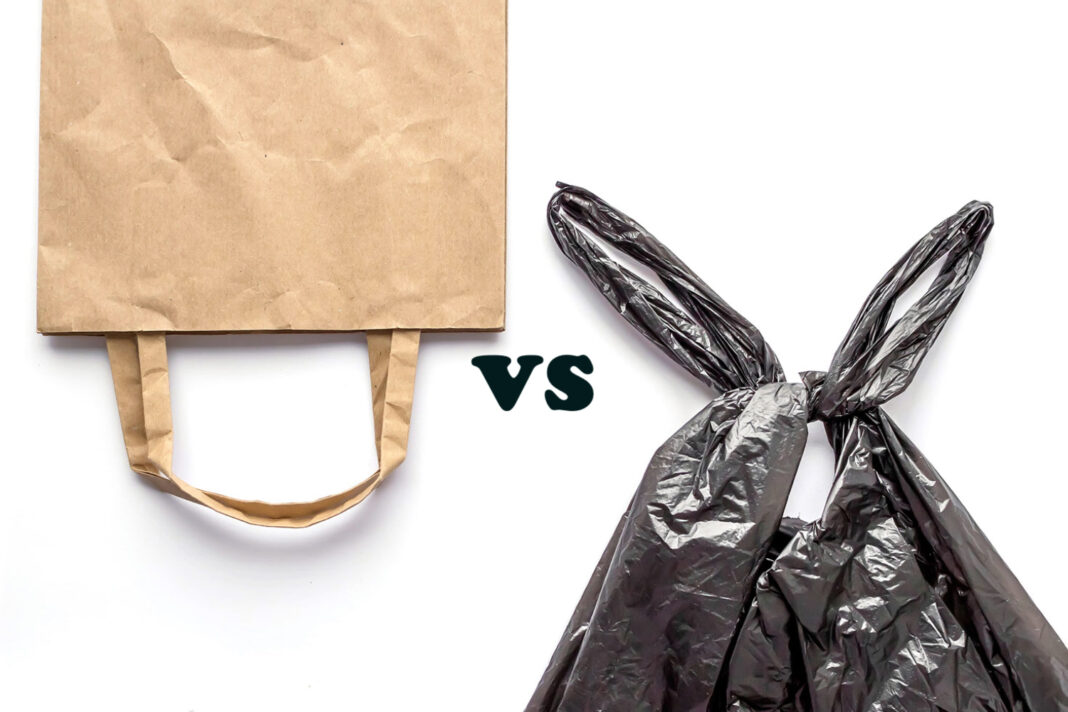Paper Bags vs. Plastic Bags: A Comprehensive Comparison of Environmental Impact
By Marie Nieves
In a world where the battle between being environmentally friendly and making decisions comes up in every action taken by us, the paper versus plastic debate has become more common, especially in the matter of gift bags.
From the point of view of eco-friendliness, both materials have their pros and cons, the preservation of which and which we can impact our planet.
In this article, let’s go into the details of paper and plastic bags to identify who among them is an environmental hero.
Environmental Showdown: Paper Bag vs. Plastic Bags
The discussion between paper bags and plastic bags centers around environmental concerns, which are represented by resource utilization, energy use, dirtiness, waste disposal, and so on. Here’s a comprehensive comparison of the environmental impact of paper bags versus plastic bags:
Use Of Resources
Resource consumption is the sum of the amount of raw material and energy that has to be used during production. The paper bag uses trees that take time to mature and require much energy and water to be turned into a bag.
Plastic bags go through the oil, which is not renewable, and energy is needed for manufacturing them. In general, both materials have considerable undesirable impacts on natural sources and environmental issues, yet they use different methods.
Utilization Of Energy
Energy consumption refers to the number of power needed to make goods. Bags from paper need a great deal of power as trees are used in manufacturing them through a complicated process that involves cutting trees into pulp.
A notable factor that consumes the energy of producing plastic bags is the melting of the plastic. Despite the fact they consume different amounts of energy, both kinds of bags drill down the original resource and generate environmental impact.
Environmental Pollution
Pollution emerges once you have something dirty like garbage, or something toxic entering the atmosphere or the water. Plastic bags can be harmful to water because they involve the use of chemicals.
Plastic bags may not have chemicals around them, but when they are made, they can be dirt in the air. Both of them can at one stage, become garbage, which is bad not only for animals but also for the environment. The pollution from the bags that are produced can be harmful to nature, so it is essential to pay attention to how we can make and use them again.
Control Of Waste
Now, waste management is a way of dealing with trash and recycling. The decomposing of used paper bags is not an issue because they are recyclable. However, in both cases, if they don’t get recycled appropriately, they will wind up in landfill.
Recycling is an activity that decreases the dumped waste and preserves resources. When we use the bags again or recycle them, we support the process of preserving the surrounding ecosystem and promote the conservation of nature. This is critical to allow the bags to be used again or recycled properly.
Reuse and Recycling
Reusing is a practice where an item is being used again instead of throwing it away. Both paper and plastic bags can be reused in a way such as shopping and transporting items many times. Recycling means that already existing materials are used to make new ones.
The paper bags can be reshaped into new paper items, but the plastic bags can be designed as new plastic products. Using and recycling bags has the same effect as saving on resources and our environment getting cleaner for us all.
Pros And Cons Of Paper Bags Vs. Plastic Bags
Here are the pros and cons of paper bags versus plastic bags:
Paper Bags
Paper bags align brands with values of responsibility and caring for the environment, aligning them with consumers who value sustainability and eco-consciousness. Moreover, customized paper bags allow businesses to showcase their brand logos, colors, and messages to consumers, effectively imprinting their identity in their minds. Therefore, custom paper bags have become essential elements in the arsenal of modern brands.
Pros:
> Biodegradable and compostable.
> Their composition is created from renewable resources such as trees.
> Easily recyclable.
> Paper bags are less toxic to wildlife than conventional trash when discarded.
Cons:
> Thicker and less strong than plastic bags.
> May not be suitable for rainy weather.
Plastic Bags
Pros:
> Lightweight and durable.
> Saves more energy than making paper bags.
> Either reusable and also recyclable for other different uses.
> Waterproof, can carry damp items.
Cons:
> Non-biodegradable and can persist in the environment for over 100 years.
> Originating from non-renewable fossil fuels.
> May be a source of pollution creating problems with wildlife and waterways.
> Hard to recycle, and they, therefore end up in landfills or oceans.
Last Words
In conclusion, both paper and plastic bags have their benefits and disadvantages. While paper bags are biodegradable and recyclable, plastic bags are the most durable and water-resistant.
On the contrary, both of them are responsible for depleting resources, pollution, and waste problems. Mitigating environmental impacts requires a complete elimination of single-use bags and using reusable alternatives instead.
Lastly, comprehensive measures of responsible consumption and waste management should be put in place for a healthier environment and a brighter future.
Author bio: Marie Nieves is a passionate blogger with an eye for design, a flair for storytelling, and a love for culture. She contributes regularly to various blogs and online magazines, all while satisfying her wanderlust by exploring states and countries near and far.
